Sicily is the largest island in the Mediterranean Sea and the southernmost region in Italy. It boasts centuries and centuries of history and many beautiful landscapes.
What are the unmissable places to see in Sicily? Below, we present 10 must-see places for their breathtaking landscapes, valuable historical sites and tasty culinary specialities!

What to see and do in Sicily: 10 unmissable places and experiences

Sun, beautiful nature, ancient traditions, history, a mix of cultures, friendliness and hospitality. In Sicily, you will find this and much more!
A trip to this marvellous island will be a mix of colours, flavours and scents that will give you an unforgettable experience.
Any traveller can find a favourite place in Sicily. But what are the 10 must-see places in Sicily?
Noto, Modica, Catania, Ragusa, the beautiful Baroque cities and Palermo, a multicultural city that fascinates with its monuments, markets and elegant theatres.
The temples and archaeological sites of the Valley of the Temples, Segesta and Selinunte are witnesses of glorious ancient civilisations.
The imposing volcano Etna and the countless beaches lapped by the crystal-clear sea.
And then there are the small, picturesque mountain and maritime villages, guardians of ancient traditions, and 7 beautiful Unesco sites.
But Sicily is also an explosion of flavours with dishes based on high-quality local ingredients: fresh fish, pistachios, ricotta, juicy oranges and much more.
Discover the 10 unmissable places in Sicily and plan your trip to this beautiful island!
Book a guided tour of the Ancient Theater of Taormina10. Catania
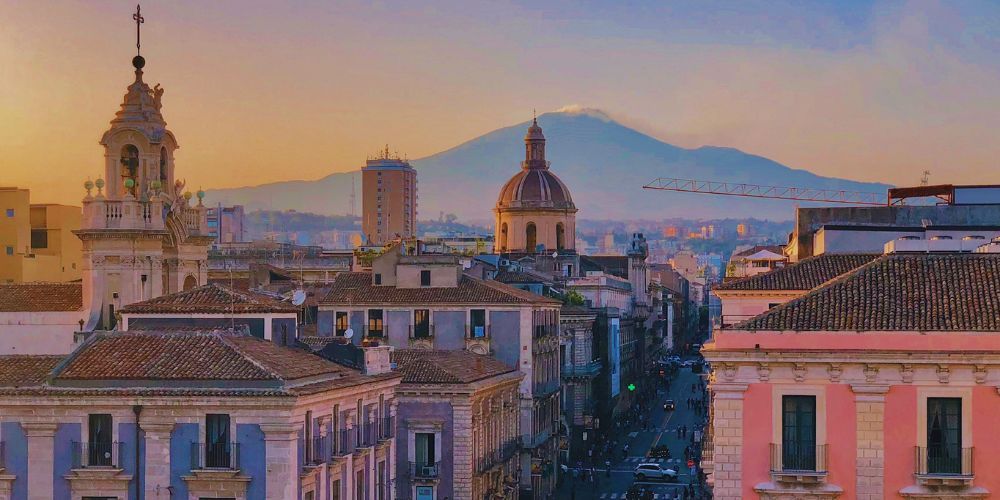
Catania is located along the east coast of Sicily, between the blue Ionian Sea and the volcano Etna.
Catania was included on the UNESCO World Heritage list of the Val di Noto in 2002 as an example of Baroque architecture.
In fact, dozens of churches and palaces are made of white and black lava stone, a Baroque characteristic.
Catania has many museums, the most important being the Museo Civico del Castello Ursino.
In Catania, you cannot miss the fish market! Here you will hear the typical shrieks, called 'abbanniari', made by the fishmongers to attract customers.
The horse meat sandwich is the most popular street food in the area.
What can we say about Catania's beaches: a limpid, azure sea bathes beaches of fine, golden sand, cliffs and volcanic shores.
Once in Catania, a visit to the volcano Etna with its evocative landscapes of caves, craters, lava flows and the remains of settlements destroyed by volcanic eruptions is a must.
Buy an half-day guided tour to Mount Etna9. Noto
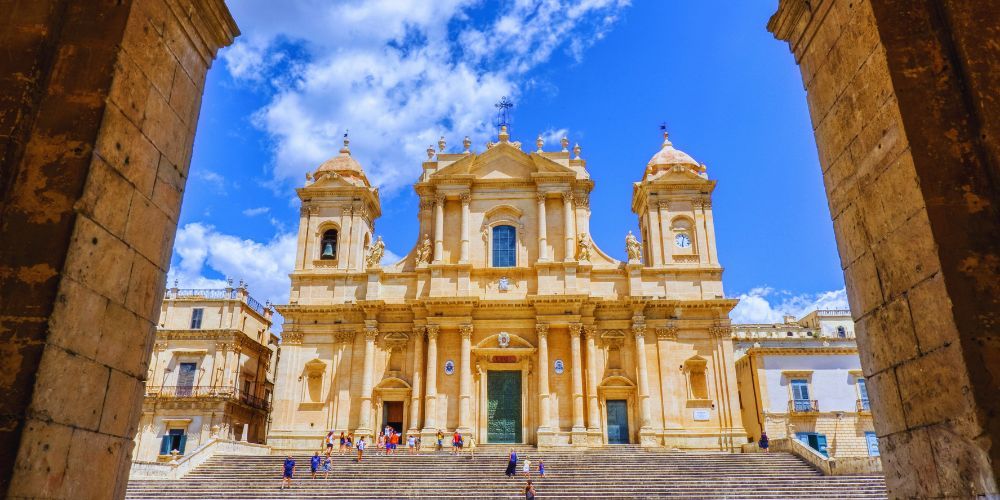
The undisputed capital of Sicilian baroque, Noto is definitely one of the main destinations to visit during your vacation at Val di Noto in southeastern Sicily.
The characteristic golden yellow limestone was useful to build the churches and palaces of the city.
You can visit Noto at any time of the year: in the summer Noto is the perfect combo of cultural and beautiful sea of its coast; in the winter, you can enjoy a tour of the Val di Noto and explore your senses thanks to excellent food and wine, tasting the local dishes and wines of the area.
Do not miss the small places close to Noto as Marzamemi, Portopalo and the Riserva naturale di Vendicari
8. Modica
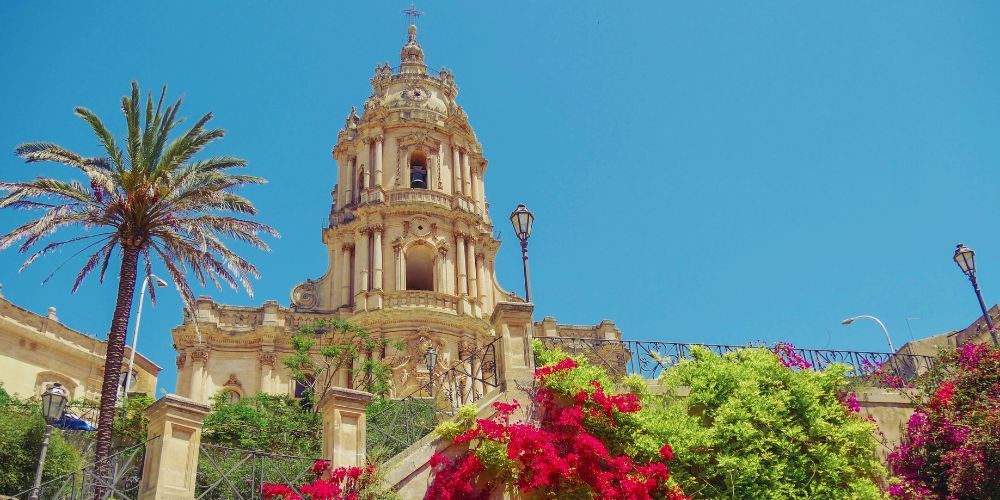
It is part of UNESCO Heritage Sites in Italy.
Modica consists of two urban centres, "Modica Alta" (Upper Modica) and "Modica Bassa" (Lower Modica).
The older upper part is perched on the rocky top of the southern Iblei hill, the lower part is built on the lower slopes and valley below.
Much of the city was rebuilt after the 1693 earthquake with imposing monuments in the Sicilian Baroque style.
The Baroque Cathedral "San Giorgio" is dedicated to St George and was rebuilt after the earthquake of 1693, like many other parts of the city.
Another important church is "San Pietro", dedicated to St Peter, in Modica Bassa. Modica was also the birthplace of writer Salvatore Quasimodo, who won the Nobel Prize for Literature in 1959.
It is famous not only for its baroque style and history, but also thanks to its delicious artisanal chocolate.
It is obtained from cocoa seeds handy worked with the same methods used by the old artisans in the 1700s.
7. Agrigento
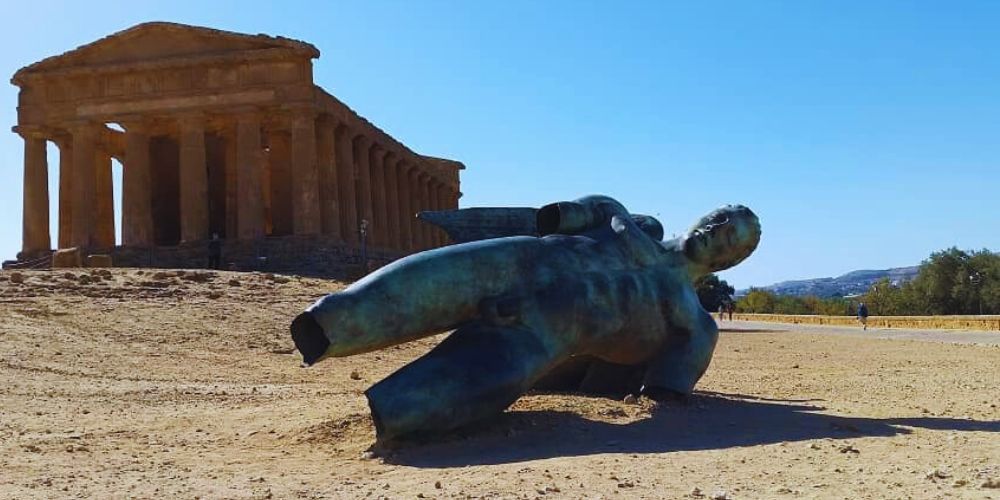
The ancient city of Akragas was immersed in an agricultural landscape dominated by olive and almond trees.
It was one of the most important Greek colonies in Sicily.
Agrigento and its Archaeological Park are one of the greatest examples of extraordinary monumental and natural heritage.
It tells us a story of more than 2000 years. The Valley of the Temples is immersed in an agricultural landscape of rare beauty consisting mainly of centuries-old olive and almond trees.
Covering some 450 hectares, it stands about 3 km from the sea on the top of two hills.
The Valley of the Temples is important for its well-preserved temples built in honour of Greek gods.
The Valley of the Temples consists of the remains of eleven temples, three sanctuaries, necropolis; hydraulic works; fortifications; part of a Hellenistic quarter and important meeting places.
Near Agrigento, visit La Scala dei Turchi, Eraclea Minoa, Sciacca and Torre Salsa.
Visit the Valley of the Temples with a guided tour6. Selinunte
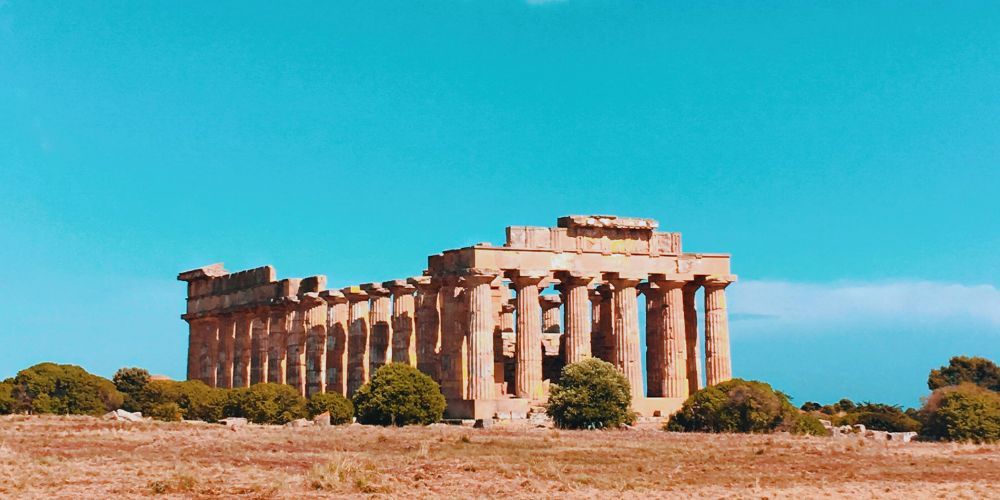
Greek pearl in western coast of Sicily, in Selinunte you’ll live the history, breath the legendary atmosphere of the Myth, dive into a sea of thousand shades of emerald and turquoise, walk on the soft golden sand against the African wind of Scirocco, you will see the breathless archaeological sites dominates the scene.
In Selinunte there is the largest Archaeological area in Europe: 270 hectares that tell about one of the most flourishing classical civilizations of the Mediterranean area.
Do not miss the fish specialties to eat in the restaurants of the town and the beautiful beaches along the coast.
Visit Selinunte Archeological park5. Marsala

Marsala, is the western most city in Sicily.
Phoenicians and Arabs have been among the protagonists of its long history.
The former left a former colony on a charming island, while the latter gave the city its name: Marsa Allah, the port of God.
It is located along the coast that connects Marsala and Trapani, in the portion that crosses the Riserva dello Stagnone, opposite the island of Mothia (Mozia).
Here you can admire the extraction of sea salt.
A magical landscape where sea, mills, islands in the background and Baroque old town centre are.
Visit this undiscovered city: take a look at the elegant buildings in the historic centre, sip a glass of delicious wine in the tasting room of a historic wine cellar, stroll through the salt pans and admire the romantic sunset.
You may already know: Marsala was the site of Garibaldi's historic landing, where he met the 1000 red shirts and the famous Unification of Italy began.
Once in Marsala, do not miss to visit Trapani, Castellammare del Golfo e Mazara del Vallo.
Visit a cellar and taste Marsala wines4. San Vito lo Capo
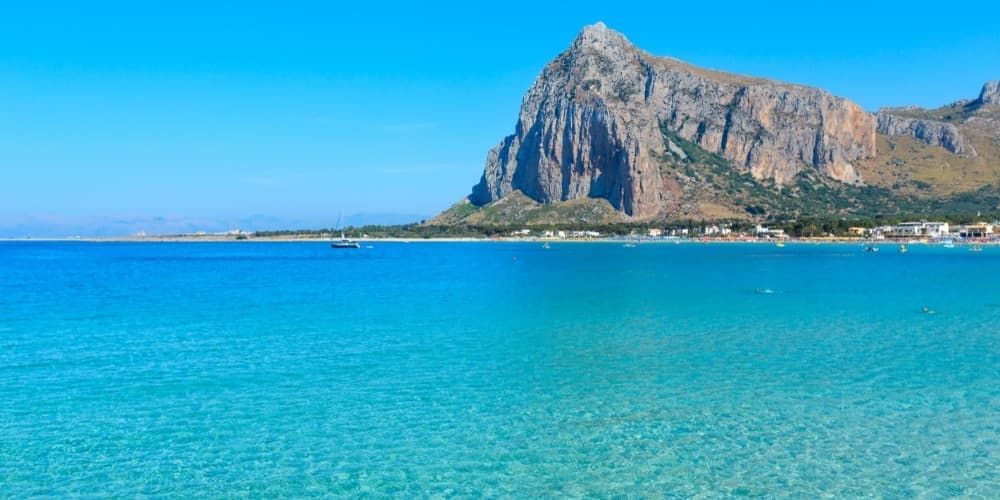
San Vito lo Capo is about 90 km from Palermo airport and 65 km from Trapani airport.
Among the best things to visit here are the old lighthouse, Tonnara di Cofano and Tonnara del Secco.
The beaches are the real protagonists of San Vito lo Capo. The most famous one is the Bue Marino, considered by Legambiente to be the most beautiful in Italy.
Among the most important natural areas, it is worth mentioning the Zingaro Nature Reserve, a protected area with an enchanting beach and a tourist village.
Don't miss a visit to the two caves: the Cavalli and the Uzzo, with the homonymous tuna fishery.
The crystal-clear colour and spectacular coastline make St Vito lo Capo unique in the world.
3. Egadi Islands
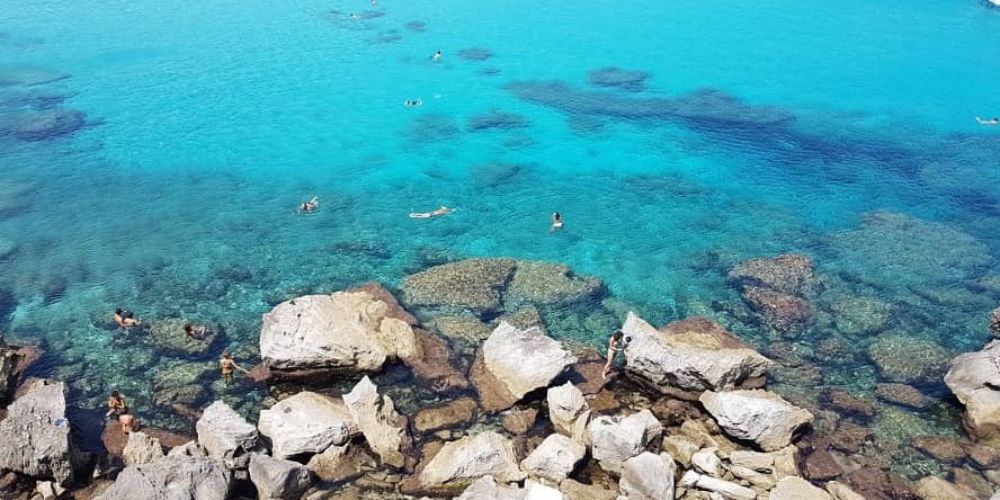
Off the northwestern tip of Sicily, the Egadi Islands (Levanzo, Favignana and Marittimo) are largely undeveloped and naturally beautiful.
The first, Levanzo is mostly a protected nature park with this one small picturesque village, Cala Dogana, tucked in a cove The “Cave of the Genovese“, which contains Paleolithic etchings from 10,000 years ago and Neo-Enolithic paintings from 5,000 years ago.
To visit it, charter a boat, and then hike from this bay about 45 minutes up a path to get to the mouth of the cave.
The second island, Favignana, is larger and more developed.
Here the Tonnara of Favignana was the site of the Florio family’s tuna netting, processing and canning facility.
Stunning beaches and coves decorate Favignana: remind Cala Rossa (red Cove) and Cala Azzurra (Blu Cove).
Marettimo the wildest and most unspoilt of the three islands.
The sea it is so cobalt light blue that.....it seems unreal. It is such a real light blue....that....wondering “are we at the Caribbean?” it is not enough.
2. Places to visit in Sicily: Cefalù
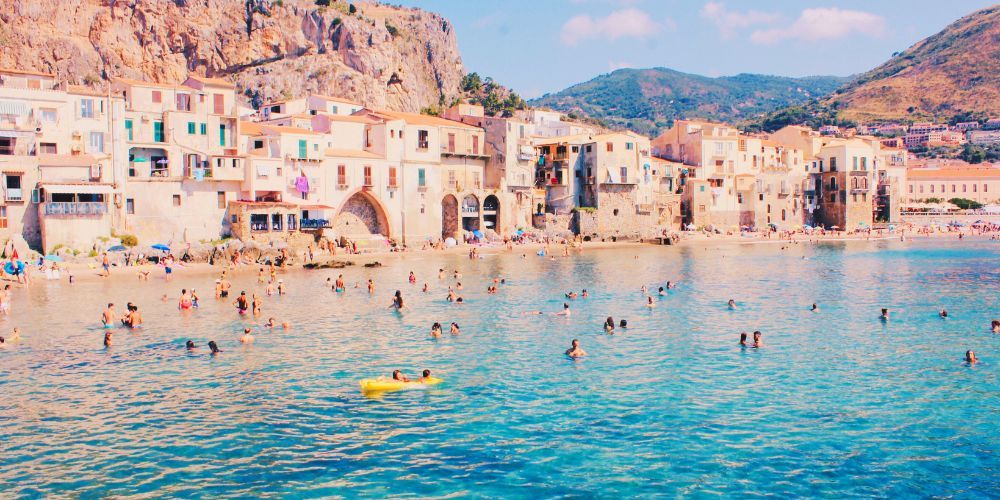
Cefalù, on the north coast of Sicily, 60 km from Palermo, is definitely among the places to visit in Sicily!
It is a beautiful city, declared a UNESCO World Heritage Site in 2015.
With an impressive Arab-Norman character in its architecture and traditions, it is known for its Norman cathedral, the Madonie Park and the beautiful sea.
Stroll through the narrow streets of the ancient village of Cefalù until you reach Piazza Marina, where you can admire the picturesque Old Pier.
For breathtaking views and sunsets, head to the Rocca di Cefalù.
The highest point of the Rocca is reached via a historical-naturalistic route.
Along the path, you will see the remains of the ancient temple of Diana and the 12th-14th century castle.
1. Palermo
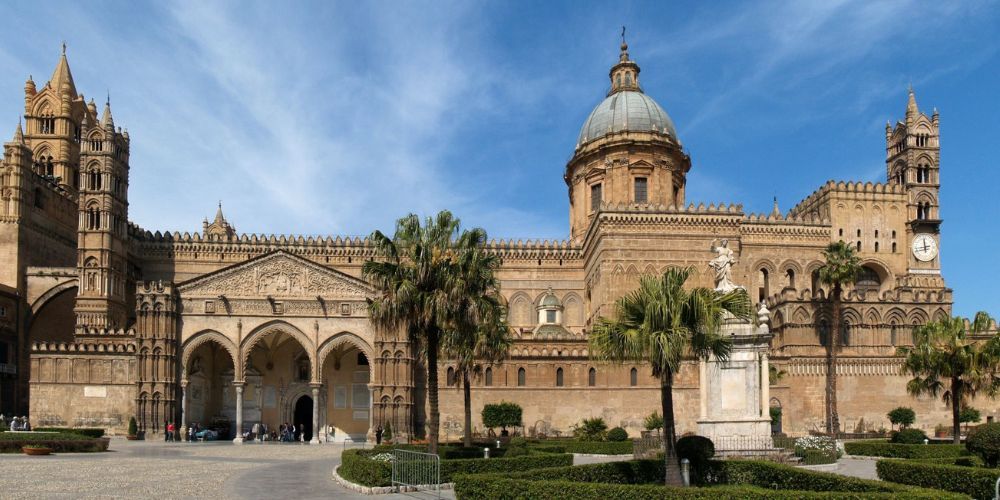
The magical Palermo is full of culture, history and good food.
So many different nations and cultures have left a mark on the city.
Its strategic position attracted invaders from around the world, as the Carthaginians, the Greeks, the Romans, the Normans, the Swabians, the French and the Spanish Bourbons, and so on.
Each invader had an impact on the city's architecture, language and art.
That is the reason why Palermo is so varied.
So let’s see its historical buildings, its squares, its famous Massimo theatre and ....don't forget the magic sea and the deliciousness of cannoli, panelle and arancini.
Close to Palermo you can visit: Segesta, Mondello e Monreale.
Discover Palermo Unesco sites with a guided tourExtra tips for your trip to Sicily. What is the most beautiful part of Sicily
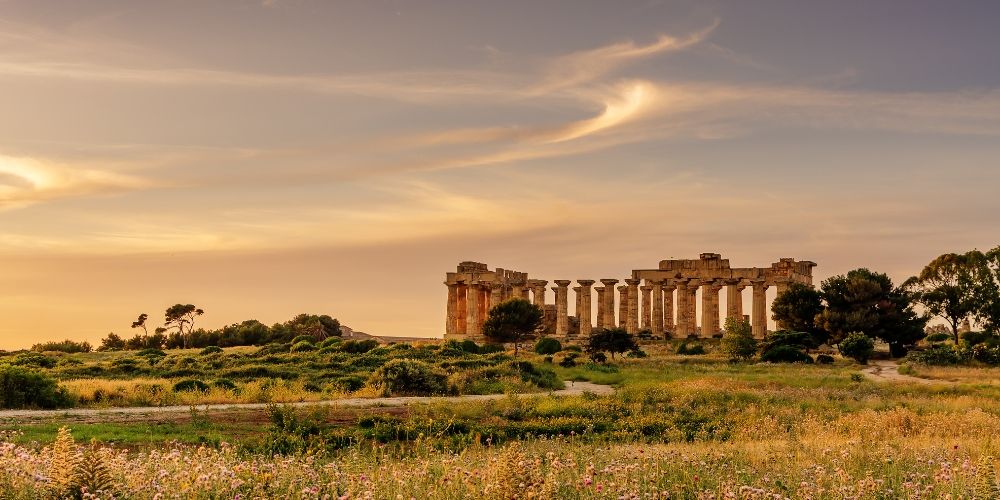
The salt pans of Trapani, the crystal-clear waters of the Egadi Islands, the breathtaking beaches and ancient history of Segesta and Selinunte are just some of the highlights of the western side.
Meanwhile, heading to the opposite coast, you'll be captivated by the majesty of Mount Etna, the baroque splendour of Val di Noto, and the timeless allure of Syracuse, suspended between myth and contemporaneity. In the heart of the island, Enna's golden atmosphere and Piazza Armerina's mosaics reveal a more intimate, hidden Sicily.
If time is short and you can only explore part of the island, choose your destination based on the mood you're after. Do you want to dive into culture, venture into nature, or relax by the sea? Whatever your first choice, remember you can always adjust your plans along the way, as every destination offers a little bit of everything.
Book entry Segesta Archaeological ParkWhat to do in Sicily for a week
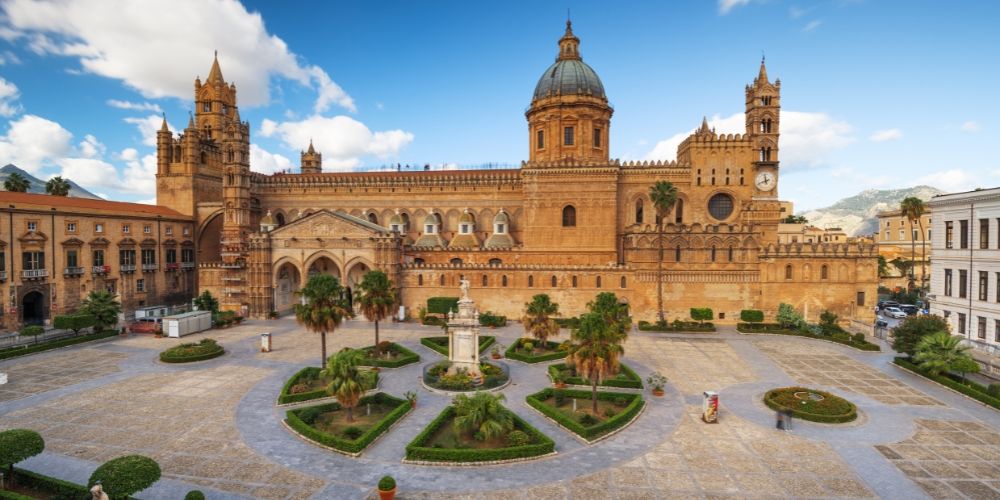
A 7-day trip to Sicily is an intense and enriching adventure for the eyes, heart, and mind. Culture, nature, and gastronomy are the main ingredients at every stop.
Start in Palermo to uncover its Norman treasures, the elegant palaces of the old nobility, and the historic markets that have become iconic stops on any proper Palermo tour.
Spend the second day in Monreale admiring the extraordinary mosaics of its Cathedral, then head to Cefalù, a medieval village overlooking an enchanting crystal-clear sea. In the following days, explore the Zingaro Nature Reserve and the turquoise waters of San Vito Lo Capo, then move on to the salt pans of Trapani and Marsala. Alternatively, head to Agrigento to visit the Valley of the Temples.
Make your way to Syracuse to delve into its ancient myths and contemporary charm, and save the final days of your trip for cities like Noto, Modica, or Ragusa, where Sicilian Baroque shines brightest. Don’t miss a stop at Mount Etna and a visit to the iconic Taormina.
Book entry Chiostro & Duomo MonrealeUnique things to do in Sicily
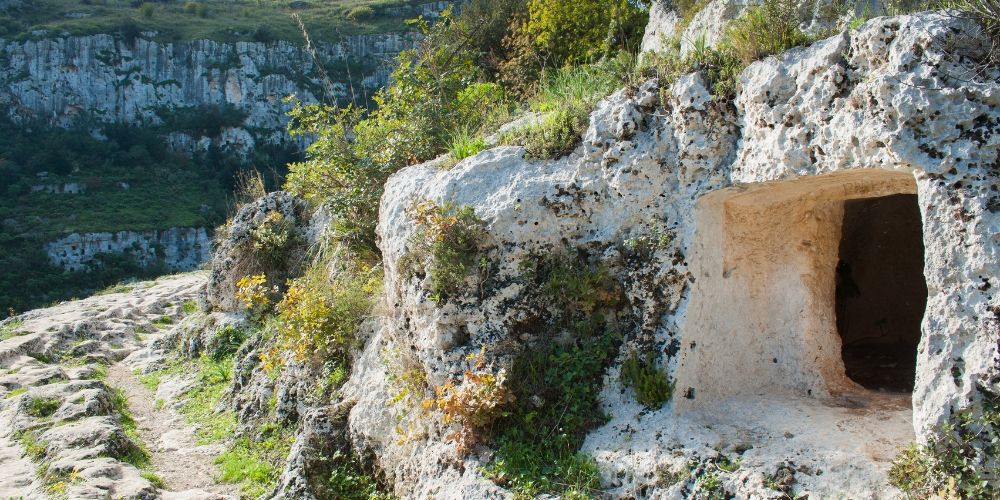
Although it's one of the world's most beloved travel destinations, Sicily still holds countless surprises and hidden gems that remain largely undiscovered by tourists. If you're eager to explore Sicily off the beaten path, take inspiration from our local itineraries and discover the best things to do in Palermo, Catania, Noto, Syracuse, Trapani, and Taormina through the eyes of the Sicilians.
Here are some lesser-known yet stunningly beautiful and fascinating attractions worth visiting in Sicily:
- The Necropolis of Pantalica: an archaeological site of immense value surrounded by a vast nature reserve in the province of Syracuse.
- The rock dwellings of southeastern Sicily, including the sites of Cava d'Ispica, Pantalica, and Chiafura.
- Isola delle Correnti, a tiny, uninhabited island in the province of Syracuse where the Ionian and Tyrrhenian Seas meet; on days of low tide, you can reach it on foot.
- The Salt Cathedral of Realmonte, a spectacular underground church carved inside a rock salt mine.
- The Roman villa of Tellaro, featuring some of Sicily's most exquisite polychrome mosaics, rivalling those of Piazza Armerina.
Best beaches in Sicily
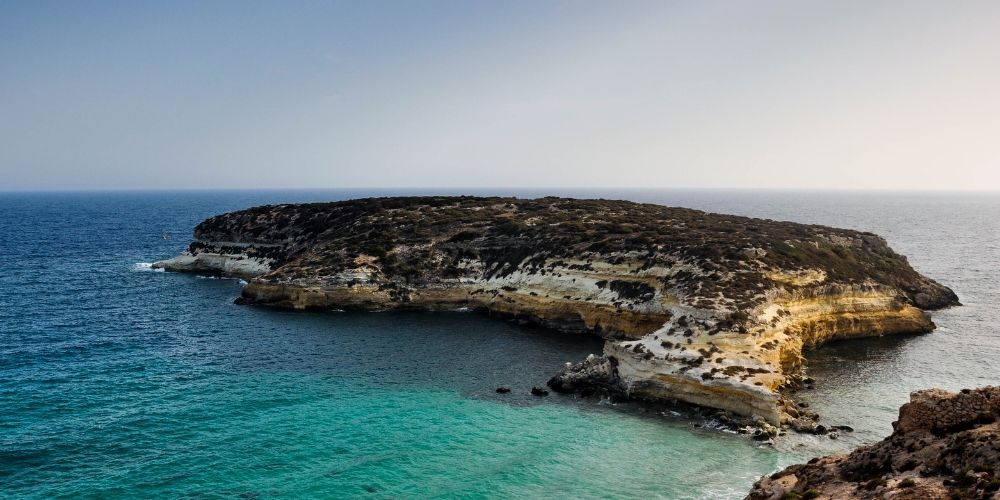
Expanses of white and golden sands, coves framed by cliffs, and unspoiled natural reserves. Year after year, Sicily's stunning beaches welcome travellers with their timeless beauty. San Vito Lo Capo and the Riserva Naturale dello Zingaro, pristine havens with scenic trails and hidden bays, are among the island's most beloved destinations.
On the opposite coast, the enchanting Isola Bella in Taormina offers a fantastic mix of turquoise waters and lush green vegetation. Other breathtaking spots include Spiaggia dei Conigli in Lampedusa, Cala Rossa in Favignana, Cala Junco in Panarea, the beach of Scopello, and Capo Bianco in Agrigento.
Book tour Giardini Naxos, Taormina, & CastelmolaSmall towns to visit in Sicily
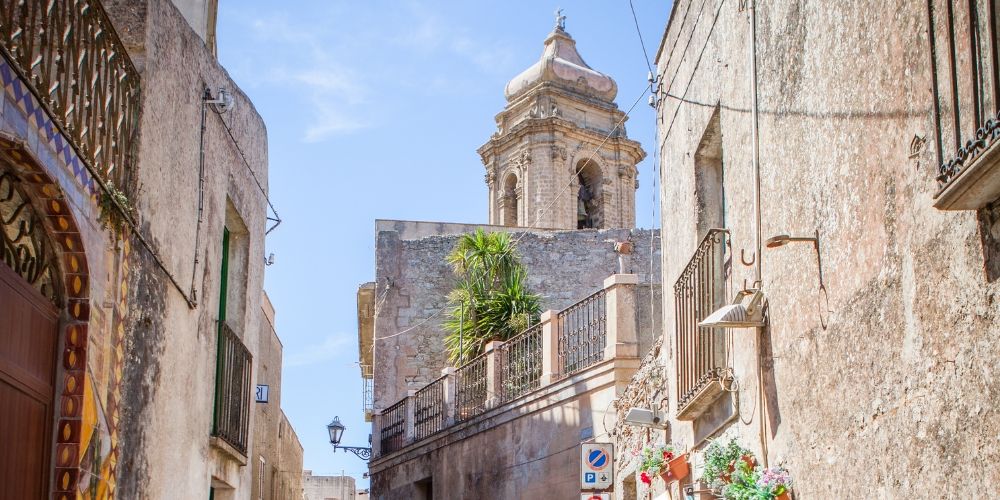
After indulging in plenty of sun, sea, and art-filled cities, it’s worth taking a peek at another side of the island: the medieval towns nestled in the inland mountains and the small fishing villages along the coast. It’s impossible to skip a stop in Erice, the medieval gem perched above Trapani, or Cefalù, with its mix of crystal-clear sea and Norman architecture.
Other must-see spots include Castelmola, near Taormina, offering spectacular views of Mount Etna and Giardini-Naxos; Marzamemi, a charming fishing village with a super instagrammable piazza adorned with turquoise chairs and blooming flowerpots; and Sperlinga, known for its ancient castle and network of homes carved into the rock.
These are just a few of the most enchanting towns in Sicily, a region that boasts 25 entries on the list of Italy’s Most Beautiful Villages.
Book tour to EriceIs Sicily worth going to in winter
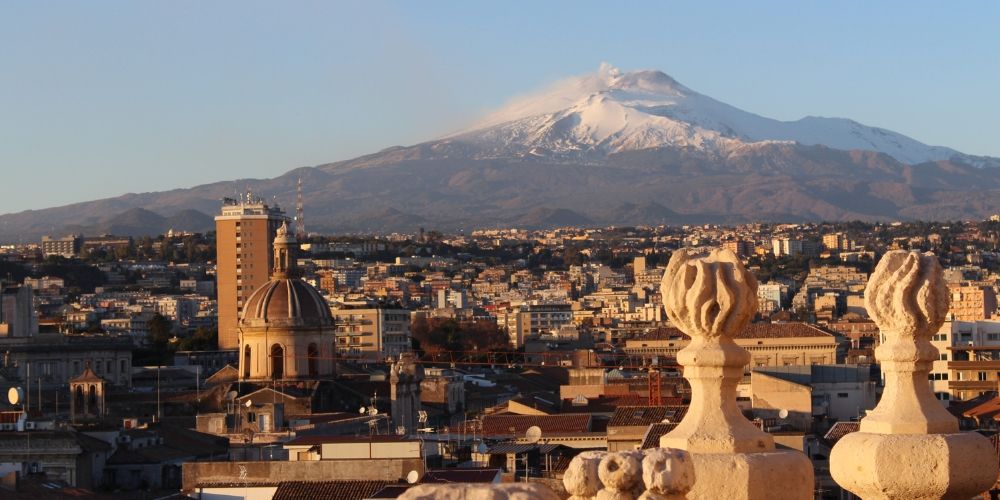
While Sicily is a popular destination in spring and summer, it’s actually a year-round delight—even in winter. The island features several ski resorts, including two on Mount Etna, the Nicolosi and Piani di Provenzana facilities. Skiers can whizz across the snow while admiring the Sicilian seascape. Other slopes can be found at Piano Battaglia in the Madonie mountains, while the Nebrodi mountains offer opportunities for cross-country skiing and snowshoeing through beech forests and around the Maulazzo and Biviere lakes.
As snow blankets the highest peaks, the main cities often enjoy mild weather and sunny days, even in the heart of winter. Sicily also features some of Italy’s unmissable December events, such as the Chocolate Fair in Modica and the Feast of Saint Lucia in Syracuse.
During the holiday season, streets, squares, castles, and even ancient mills get a magical makeover. Sicilian Christmas markets, nativity scenes, performances, and Santa’s villages are springing up all over the place, From Palermo to Milazzo, from Caltagirone to Viagrande.
Things to do in Sicily with family
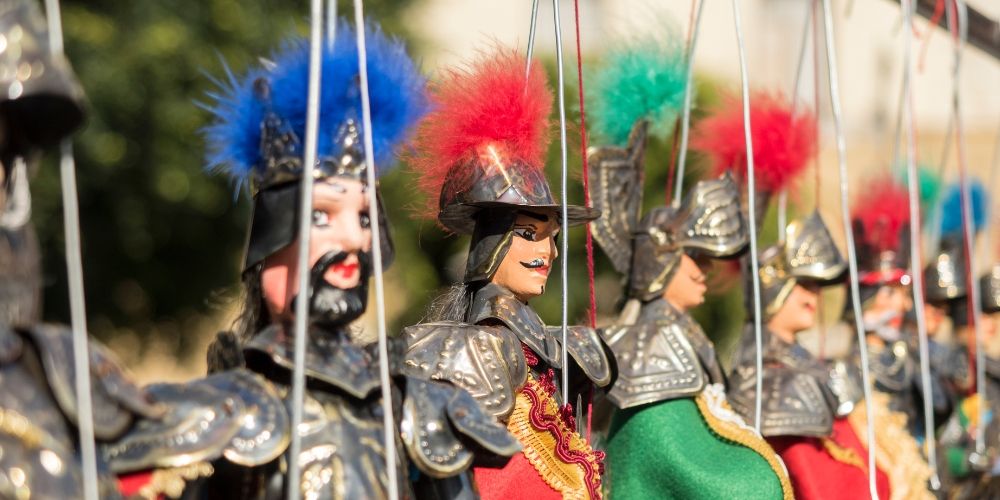
Sicily offers various activities for families travelling with children, from beach days to adventurous outings. In San Vito Lo Capo and Fontane Bianche, the shallow, clear waters are perfect for a relaxing day by the sea with little ones.
For a bit of excitement, consider taking an excursion to uncover the mysteries of Mount Etna: curious minds can learn about volcanoes up close. Alternatively, plan a family trip to Alcantara Park and explore its stunning gorges, carved by icy waters—an ideal way to beat the summer heat.
Young adventurers can enjoy suspended paths and zip lines at the Madonie Adventure Park, while at Etnaland, a theme park near Catania, they can burn off energy on rides, water attractions, prehistoric discovery trails, nature experiences, and educational workshops.
In Palermo, visit the International Puppet Museum to rediscover the ancient art of Sicilian puppetry. Kids can create their own puppet and watch a performance tailored just for them.
Things to do in Sicily for couples
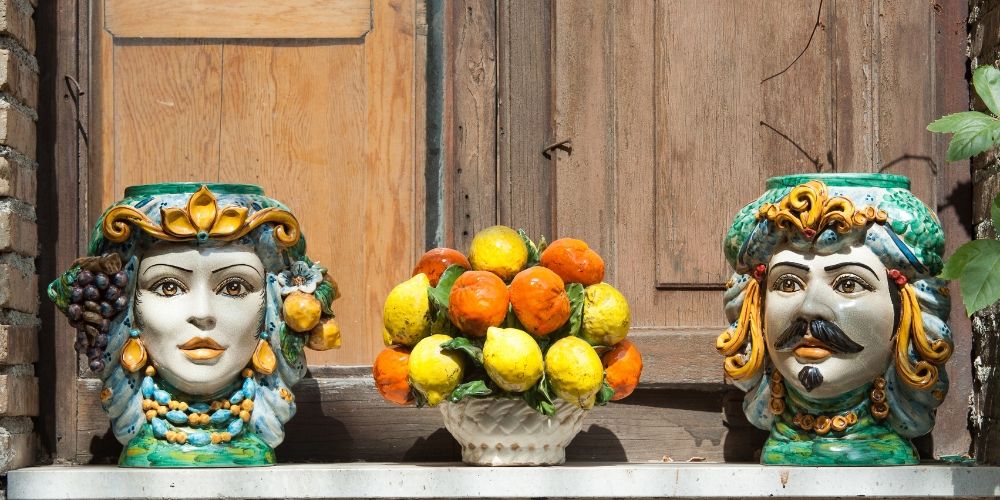
A land that stirs passions, Sicily is a superb choice for a romantic getaway. Picture yourself strolling hand in hand with your partner at sunset through the narrow streets of Ortigia, the ancient heart of Syracuse. Or enjoying a starlit dinner at a romantic restaurant in Taormina. There are loads of enchanting hidden places for couples in Sicily.
Take a trip to Ibla, the jewel-like historic centre of Ragusa, and Terrasini, known as the "town of love". Themed installations like signs celebrating kisses, murals, heart-shaped fountains, and literary benches dot the seafront of this small town near Palermo.
Not far away, Santa Flavia offers plenty of scenic spots to explore together: the impressive Arco dei Baci, a rock monument featured in a historic Perugina ad campaign, the charming Santa Nicolicchia harbour, and the Capo Zafferano lighthouse.
For a touch of adventure, an excursion to Mount Etna, especially at sunrise or sunset, becomes an even more memorable experience when shared with the one you love.
Book Morning or Sunset Etna ExcursionTop 10 places to see in Sicily
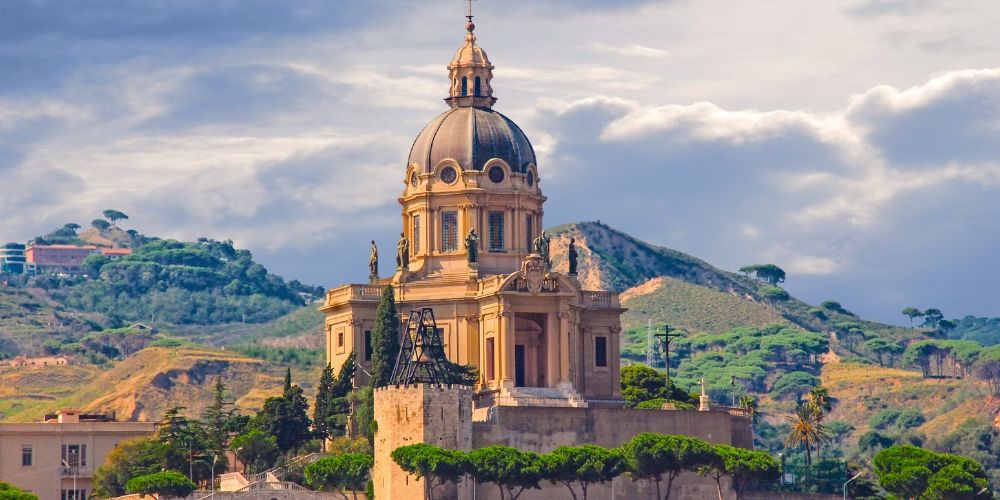
Choosing the best spots to visit in Sicily is so hard! Nevertheless, a list of 10 must-see destinations for your trip should definitely include these highlights:
- Catania, a vibrant city at the foot of Mount Etna, renowned for its baroque historic center, lively urban atmosphere, and thriving culinary scene.
- Noto, the queen of Sicilian baroque.
- Modica, famous for its artisanal chocolate and the charm of its alleys and baroque monuments.
- Agrigento and the Valley of the Temples, a site that reflects the grandeur of the ancient Greek city.
- Selinunte, a breathtaking archaeological site home to one of the largest complexes of Doric temples in the world.
- Marsala, celebrated for its wine and salt pans, a unique spot dotted with old windmills and teeming with numerous bird species.
- San Vito Lo Capo, with its white sandy beaches and turquoise waters.
- The Egadi Islands, a wild paradise for sea lovers.
Cefalù, a picturesque village with golden beaches and a magnificent Norman cathedral.
Palermo, the iconic city with Arab-Norman architecture, a UNESCO World Heritage Site.
About the author
Written on 21/07/2021

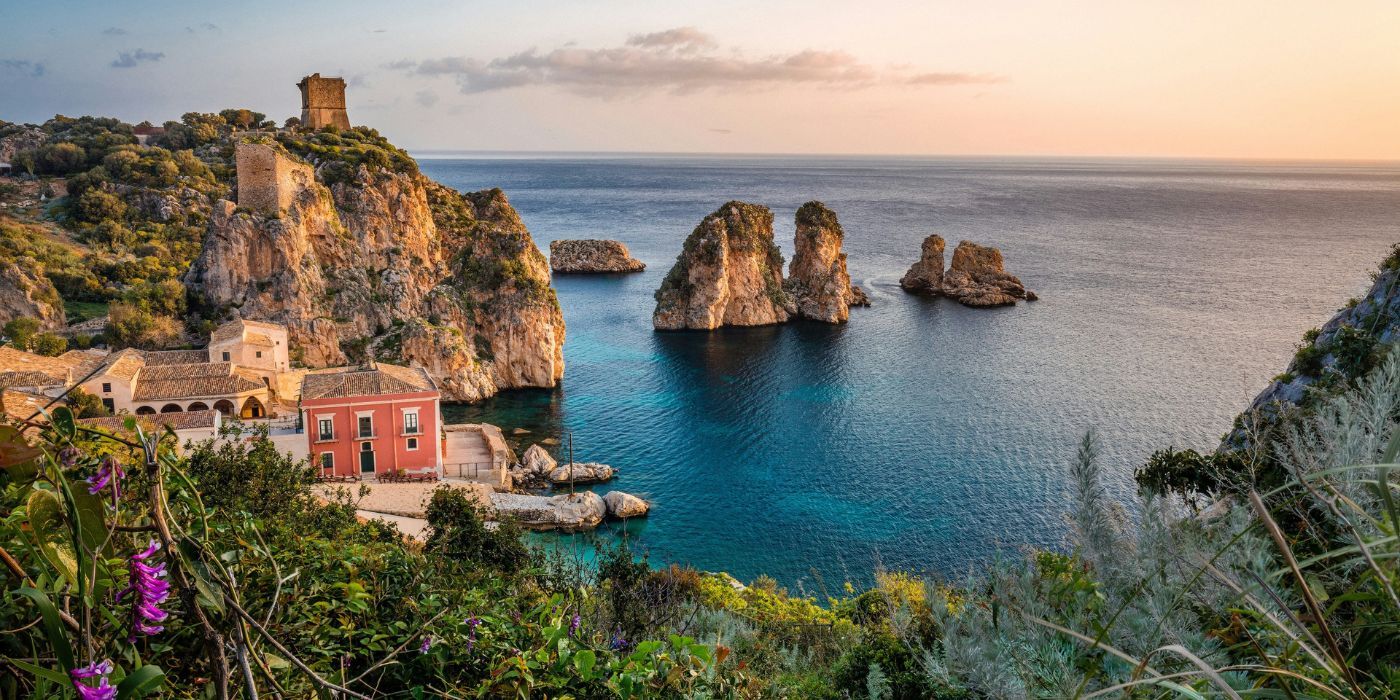

Liliana Moccia
What to see and do in Sicily: 10 must-visit stops to discover top places and experiences.